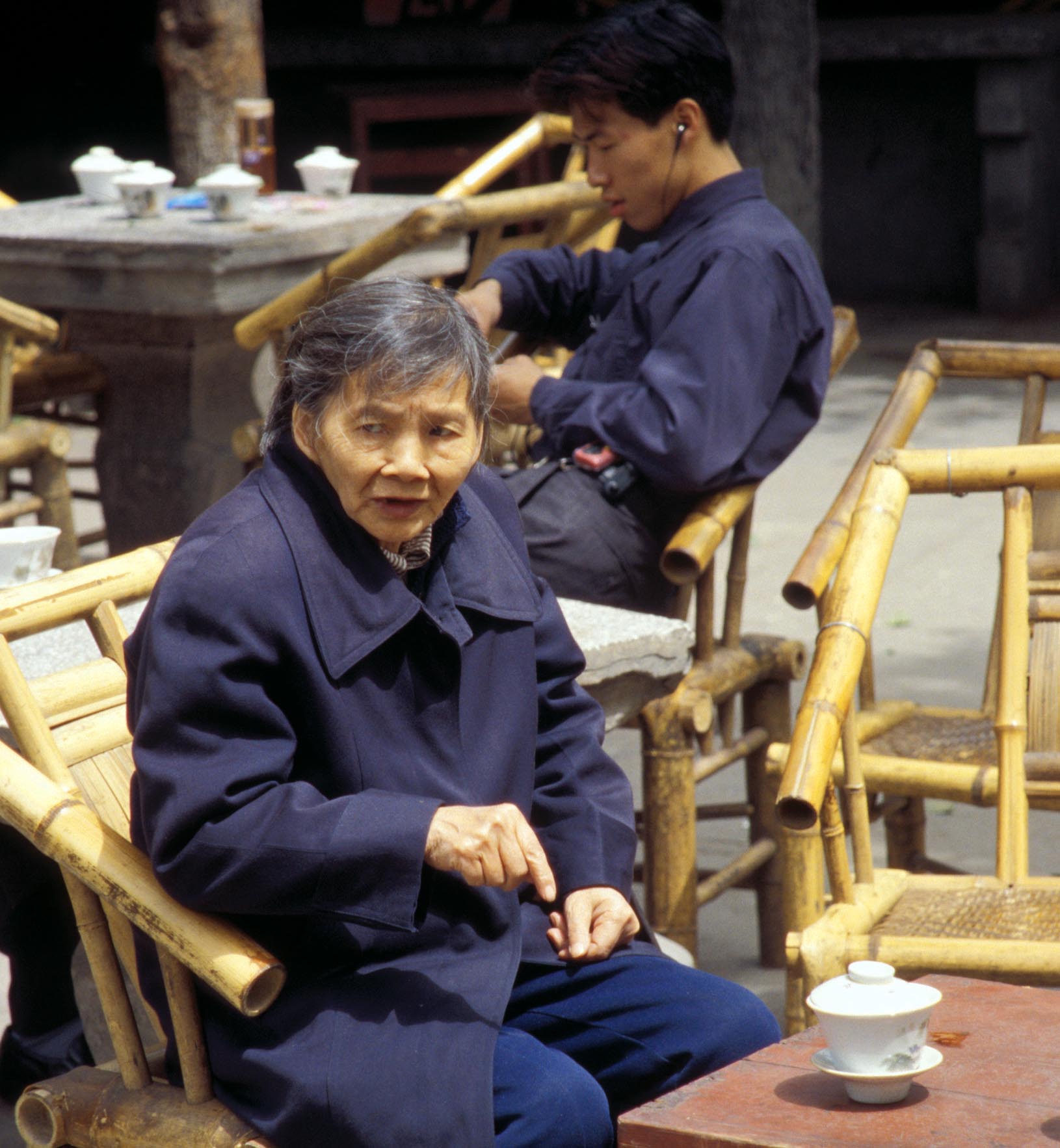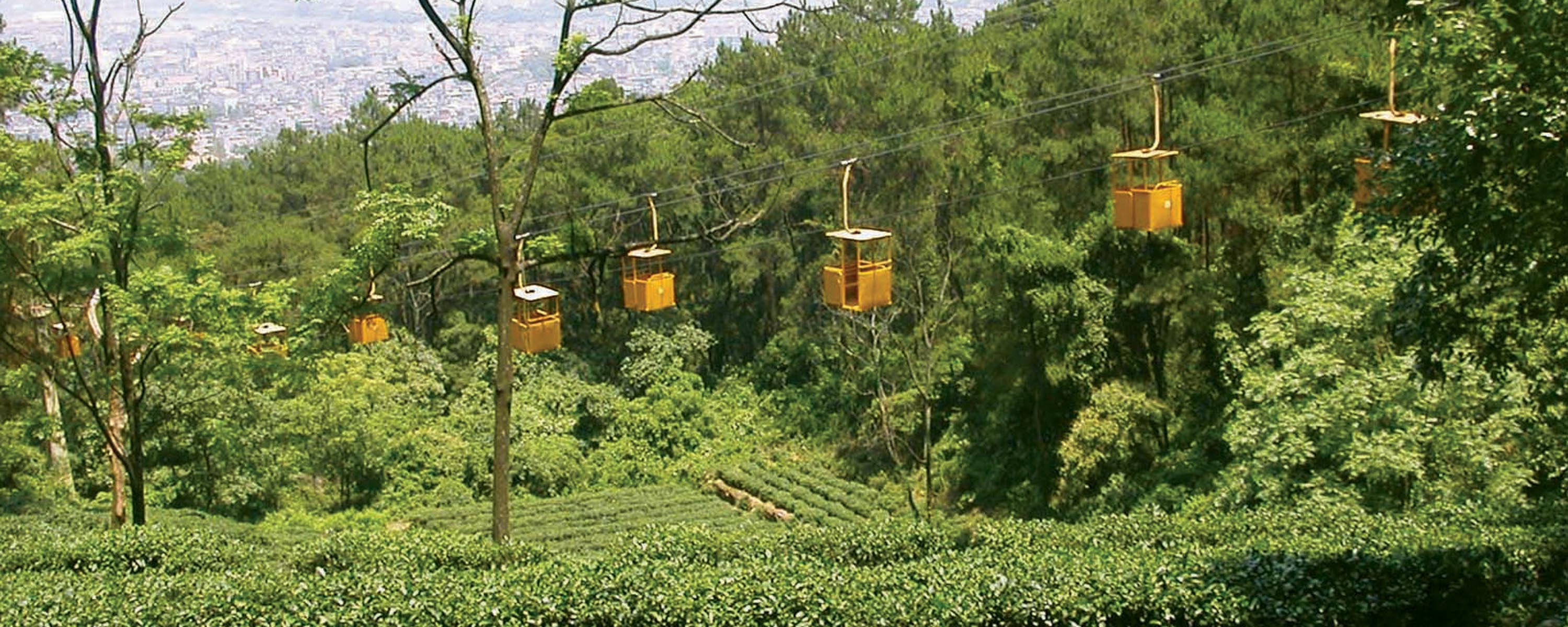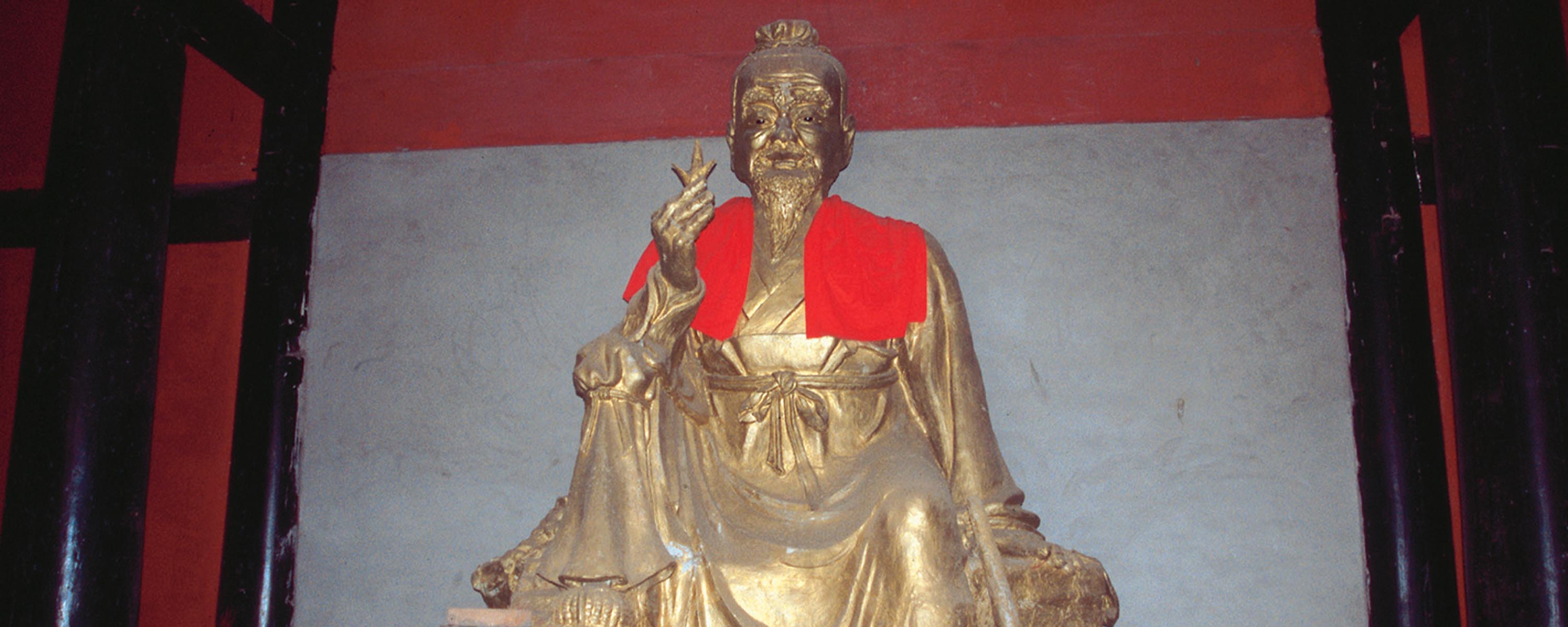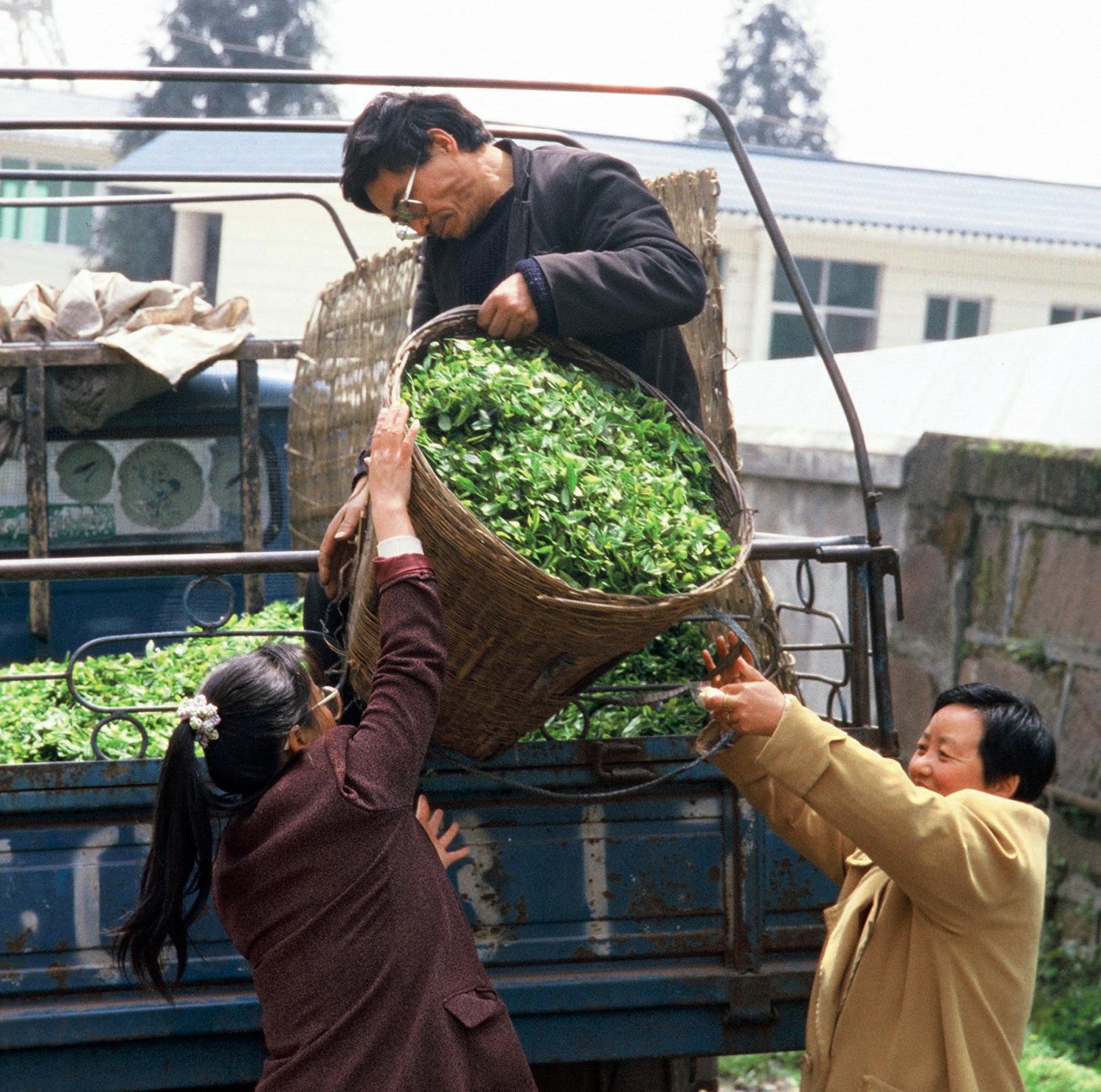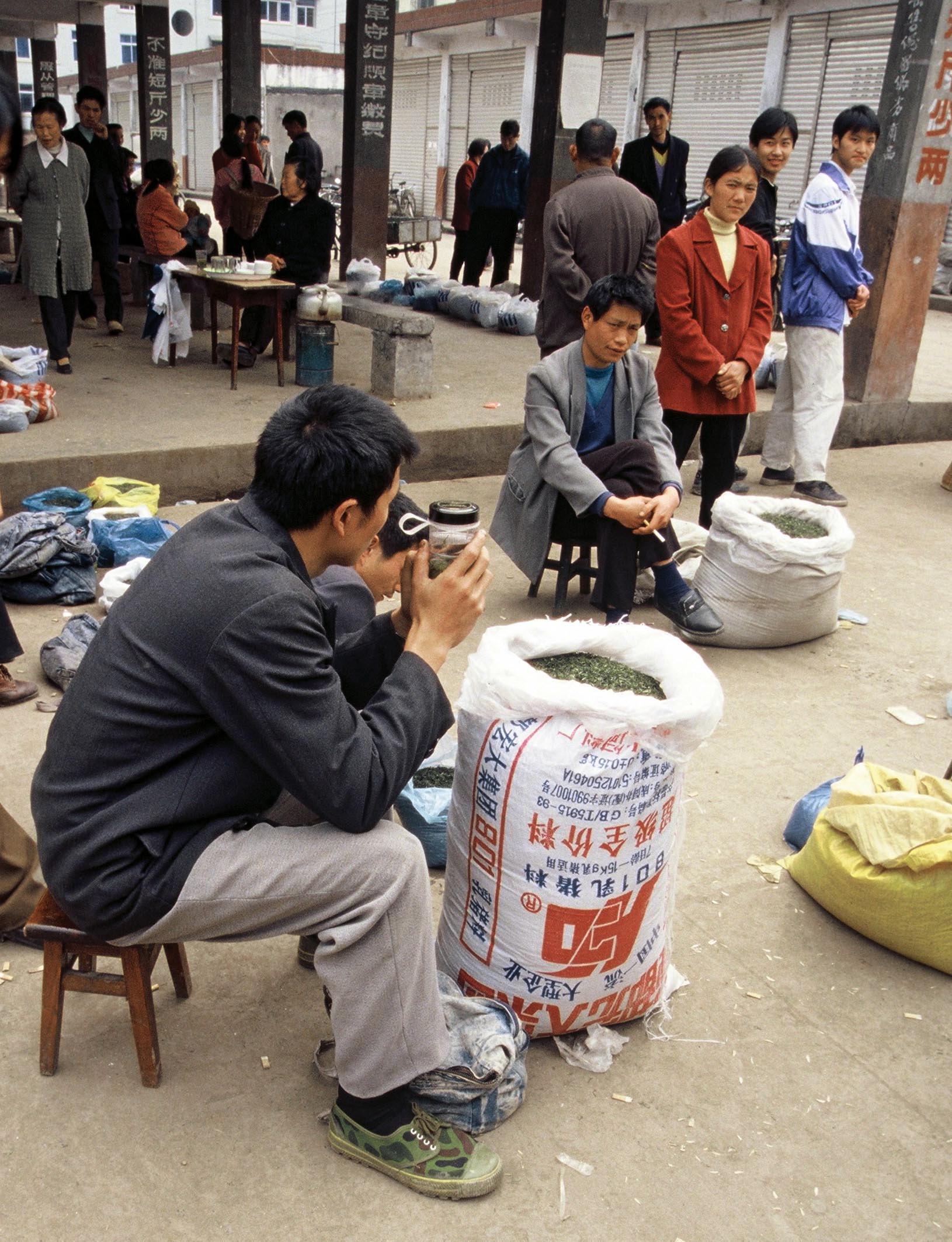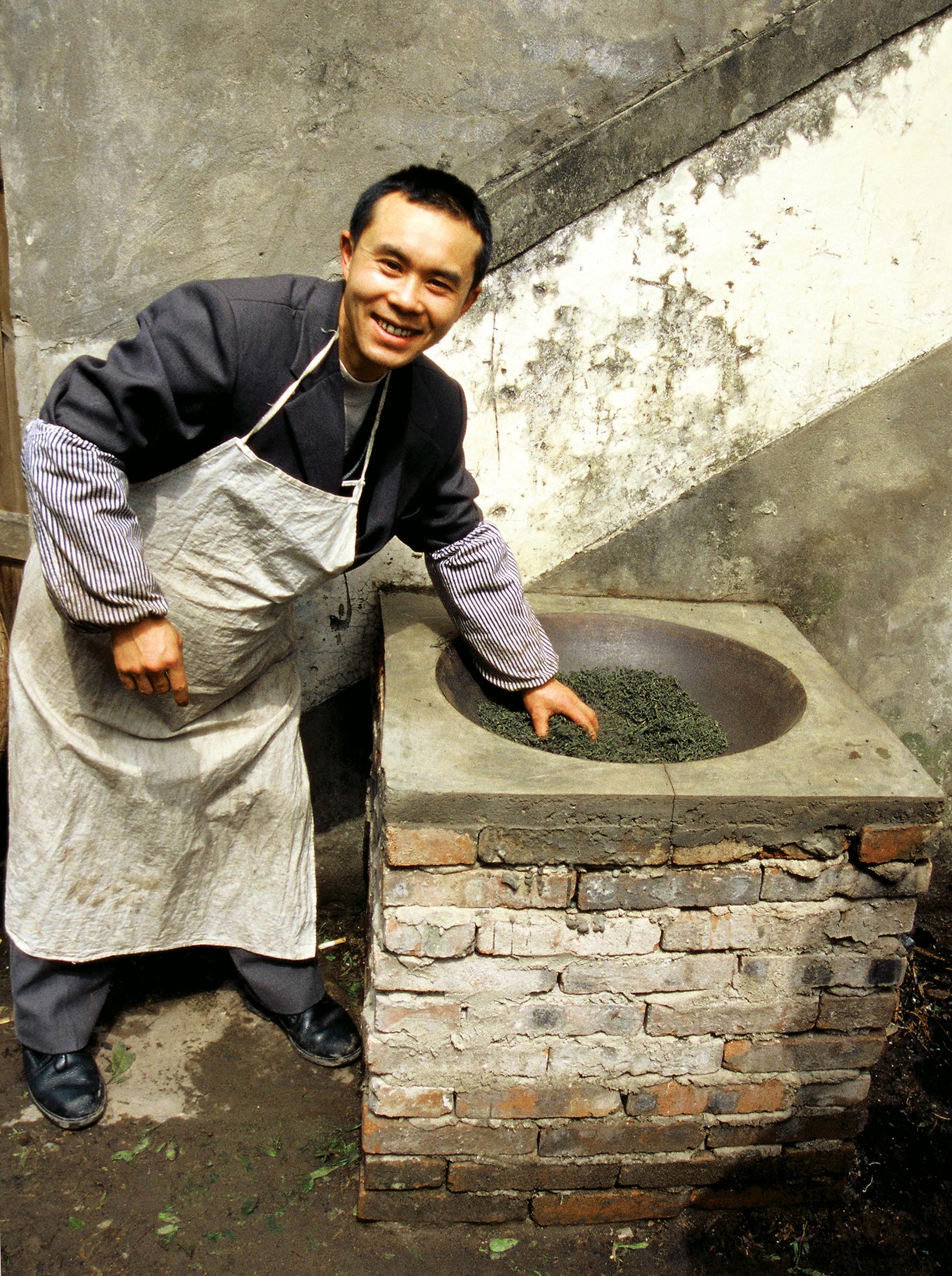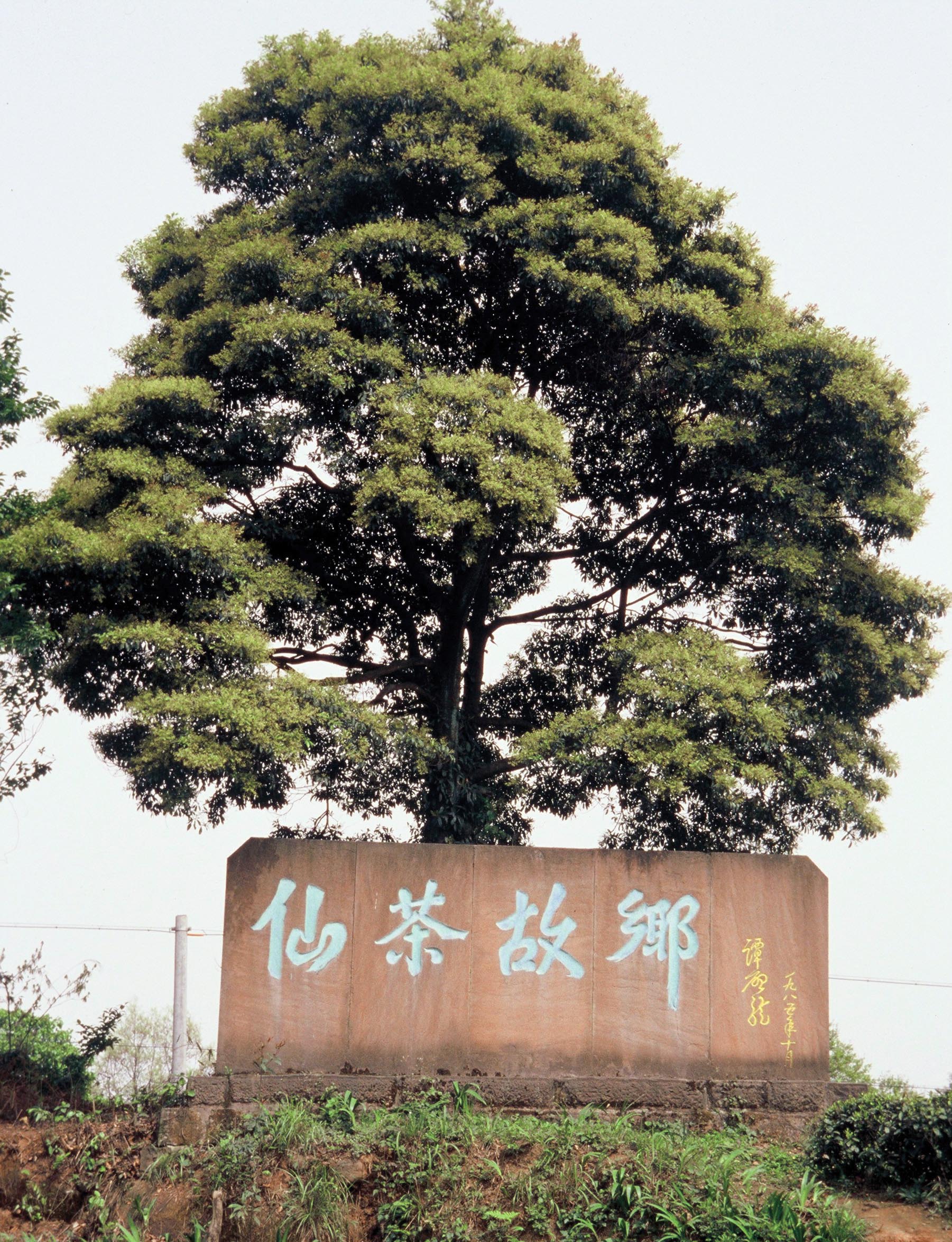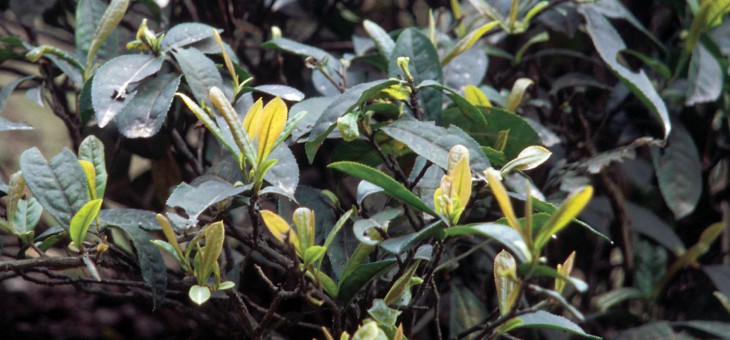
Tea literature is relatively miserly with its explanations of the term “yellow” in relation to China tea (and, by the way, only in China will the reader ever encounter the term). One gets the impression that there is some unresolved problem here, some little question mark hanging in the air, and an area where the opinions and theories of tea specialists and laymen are in contradiction.
It was again the urge to solve a mystery which brought me on a new journey to China in 2001.
The only hints were a few names of so-called “yellow teas” in pin-jin transcription and the information that “somewhere in Hunan or perhaps Anhui, but certainly in China,” it would be possible to find out more.
“Huo Shan Huang Ya” –Anhui Province,
“Ping Yang Huang Tang” –Zhejiang Province,
“Chong An Lian Xin” –Fujian Province,
“Meng Ding Huang Ya” –Sichuan Province,
and
“Bei Gang Mao Jian,” “Yuan An Lu An” –both with no known area of origin.
These were the only clues, and the not very solid points of reference on which to plan our journey. I cannot quite remember why we finally decided to head for the place that was furthest away and least accessible, but perhaps it was just because it was the furthest.
Tea and Tea Rooms in Sichuan
Due to its strategic position, protected on the east by the Longguan Mountains and on the West by the mountains of neighboring Tibet, the Province of Sichuan has earned itself a place in history primarily as the birthplace of silk. This was the place from which the caravan routes radiated outwards, taking white gold but also other goods including tea to the South and Yunnan, to the West into Tibet, or to the North and the South-West branch of the Silk Road.
The provincial capital of Sichuan, Chengdu, is probably the most “tea-centered” town I have visited anywhere in the world. There are tea rooms on nearly every corner. Every park is also a tea house and the courtyards of the Buddhist temples seem almost designed for drinking tea. And drinking tea is a matter of course here. It is not just some kind of drinking scene staged for tourists eager to purchase. There are not many tourists here anyway.
Loose tea is sold in small shops and to our dismay the sellers do not stock the local favorites such as Zhu Ye Qing Lu, Gan Lu, E Rui, Qing Chen Shan, Yun Wu or the Huang Ya we are seeking, but plagiarized Long Jing or Bi Luo Chun. Essentially they do not give a damn what a tea is called so long as they get paid for it!
In one such little shop we tried to find out something about the yellow tea Huang Ya, and discovered that the very tea we were looking for had just been offered to us a while before as Long Jing, had a distinct resemblance to Mao Feng, and carried a little label with a name completely unknown to us.
Trekking in the Mountains
We went from Chengdu to the small town of Ya An, which according to available information offers a better range of local teas. More importantly, we arranged a meeting with the owner of a factory in the village of Meng Ding just under 10 kilometers from Ya Anu.
The meeting had been arranged for four in the afternoon, and so we first headed up to the hills rising above Meng Ding where we made a discovery of unexpected proportions. A local taxi took us to the foot of Mount Ming Shan from where we continued up using the chairlift for local tourists. The view from the top was breathtaking. Tea plantations spread out on the slopes of the mountain, between them were little stone paths and the roof of one of the monasteries.
We continued on foot. At one point we were stumbling on slippery stones and struggling past dense vegetation, but we were approaching the unsuspected goal of our expedition!
The abandoned Buddhist monastery had been reconstructed many years before and the government had decided to put a museum of tea in it. Unlike the “All-China Concrete Museum” near the town of Hangzhou in Zhejiang Province, however, this tea monument was highly picturesque and persuasive. The front wall of the monastery was decorated by four stone reliefs depicting the cycle of tea culture from cultivation to drinking. Beside the entrance on an old wood-cut one could see the Emperor himself, being offered gifts of tea, and inside the whole complex, in the courtyard, we found a permanent exhibition of all kinds of tea bushes brought here from far and wide. In the side wings of the monastery there were small exhibitions of examples of all kinds of local teas including their historic packaging and the historical implements, aids and simple machines used in the past for tea production.
The most exciting sight awaited us in the main monastery temple, however, which is dominated by a several meter high statue of the supposed founder of tea cultivation in China! According to local sources he was the monk Wu Li Zhen, who lived in the period of the rule of the Shang-Jin Dynasty (1523–1027 BC), supposedly in the very place where we found ourselves, the slopes of the Mountain of Ming Shan!
At that moment we wondered if we had reached the very roots of the tea cultivation (Sichuan competes for this honor with Yunnan).
The Difference Between “Yellow Tea” and “yellow tea”
In the past every Chinese province had to pay taxes to the emperor. The tax was gathered in the form of the best goods that local people could offer. In some places it was mineral resources, in others handmade articles, and in others cattle or sheep. In the tea-producing areas this obligation was sometimes extended to tea.
There was only one emperor, but thousands of tea producers. The consumption of tea at the imperial court was reckoned in tens of kilograms, while hundreds and thousands of tons were actually produced. Only the best of the very best had a chance of getting to the table of the emperor himself. And when a tea was chosen in this way, it naturally acquired huge fame. In many cases it also earned the adjective “imperial.” And the color of the emperor was from time immemorial yellow!
In the period of the Qing dynasty (1644–1911), the color yellow even became exclusively an imperial color. Nobody else would dare to wear it, and only the palace of the emperor might have yellow roofs. It is therefore easy to see how “imperial tea” became “yellow tea,” especially since the pronunciation of the Chinese sign “emperor” is the same as the sign for “color yellow.” Yellow tea (with a capital Y) could then be a name applied to any high quality tea served at the imperial court, regardless of whether the tea was green, white or blue-green. In fact we encountered the name “Yellow Tea” in the northern part of Fujian Province in the mountains of Wuyi Shan. Here semi-fermented Da Hong Pao was offered to us as “Yellow.” In Hunan Province, on the other hand, white Jun Shan Yin Zhen is also labeled “Yellow.”
Did any independent category of “yellow teas” (with a small “y”) exist then? We asked the guide at the tea museum.
Another Secret
“Yes, of course, but its processing technology is a closely-guarded secret,” was the reply. “I can only tell you that at the beginning the tea is processed like green tea, but in the final phase there is a change. The wet leaves are not dried rapidly, but slowly at a certain temperature for a relatively long time, during which they are covered with flax fabric. This is the procedure used, for example in the production of the local Huang Ya. For obvious reasons I can’t tell you any more details about the temperature and length of drying.” “Naturally” we said thinking of the “obvious reasons” but at least half-satisfied, we left the monastery-museum.
The time for our meeting with one of the local tea producers down in the valley was approaching, and it turned out to be extremely fruitful! We had a chance to visit a small factory where workers were just processing the tea “Young Bamboo Shoots,” or Zhu Ye Qing Lu. There we were told that the best quality Huang Ya is processed only in one period each year, between the 27th of March and the 5th of April, when the temperature and moisture of the air are in rare balance, and that the processing of this tea takes four days.
“We have found it!” we thought to ourselves as we returned to the provincial capital Chengdu. We were missing only one piece of information, the temperature at which the wet leaves were dried out, causing the decomposition of the green chlorophyll and so the change in leaf color from green to yellow. On that subject our host had refused to talk, not even promises to buy the best of his production in future had had any effect.
The tea culture has given the town of Chengu one unique feature. There is in the city a multi-story “Tea House” built in a grandiose style. The aim of the architects was to capture and preserve the old cultural values that are vanishing as a result of globalization and the modernization of China. The building has a central room as large as a station hall with a glass roof and is full of greenery, with entertainment from live musicians playing traditional instruments, and tastefully furnished like a large tea garden restaurant. Up on the galleries the visitor can admire artifacts rescued from town buildings, monasteries and village dwellings which are now demolished. Here you can borrow literature saved from the “cultural revolution,” or hire a room and watch period black-and-white documentaries from an antique projector.
We were of course a little bewildered by such a sophisticated setting in a China that we otherwise found pulsing with spontaneity and raw life, and we were all the more surprised when after getting a very warm welcome we were served by rigorously trained and elegant waitresses and offered a range of tea mainly from local representatives. The person in charge of the choice and presentation of tea was a particularly cultivated young man, extremely well educated in tea sciences, who was willing to discuss all kinds of esoteric tea subjects with us.
We couldn’t resist complaining to him a little about the problems foreigners in China experience when trying to get information on old secret procedures for tea production, and he sympathized with us. He himself didn’t seem to find any subject a taboo … except the production of yellow tea! He apologized greatly for the fact that he could reveal no more than that the temperature at which the covered leaves were dried out over not quite four days was 50 degrees Celsius!

